hi everyone, back from a surprise hiatus~~ if you can’t write, then read… and i swear i’ve been reading. excited to be back, i missed you.
“if we cannot free ourselves, we can free our vision” - piet mondrian
“art is our chief means of breaking bread with the dead.” - w.h. auden
i finally shared some music as guest dj on hydefm—a community radio station out of san francisco. tune in for an hour of relaxed trip hop, liquid drum & bass, and what? is that a sade track!? atmospheric, sensual, and grizzly music to enjoy on a rainy day while you clean the house. other radio favorites are alex mccracken + skyler redondo with a playful take retro house music. also loved pressing’s recent mix chock full of clever percussive blends.
[10 min. read]
the essay is a story of how i learned to buy good olive oil by going to italy. if you want to know what extra virgin means, how oil is milled from inedible fruits, and aren’t an extra virgin yourself (ha!) stick around. if you just want a decent bottle—scroll to the end, i left you a cute, snappy, gen-z-friendly listicle!!!
~end disclaimer~
80% of the olive oil sold in the us is fraudulent—falsely labelled as extra-virgin, cut with cheaper canola oils, or even swapped for nut/soybean oils colored green with green and flavored artificially. in 2007, a slew of media coverage blew the whistle on italian opportunists who packaged fake oils in vesuvian-esque bottles and shipped fake “product of italy” labels to the $1.5 billion US market. new yorker journalist thomas mueller most accurately portrayed the issue in his extensive write up “slippery business” comparing oil profits of the early 2000s as “comparable to cocaine trafficking, with none of the risks.” more than drugs or “authentic” persian rugs, olive oil was the single most adulterated product in europe.
since the media flair and crackdowns by the italian taste-tester task force (not a joke), oil busts have increased and frauds have declined, but it’s 2022 and i keep buying shitty olive oil in the grocery store. finding a good oil is no novel task—fraud is high, oil spoils easily, and most importantly, americans (like myself) grew up on bad oil—we buy what we know, and what we know is fake 80% of the time.
bad oil can taste waxy like a crayon, acidic / rancid, or greasy in the mouth, leaving a hollow spice behind. good olive oil should still be peppery, but with cleaner mouthfeel—tasting of flowers, young fruit, and fresh grass with a focused green taste. it’s a fat for both cooking and seasoning. for searing without losing moisture yet also adding complex dimension to foods. a well-paired oil stretches vegetables with a certain deepness while still brightening foods—helping flavors bloom like salt, but a different . samin nosrat, author of the cookbook salt, fat, acid, heat knows “your food will taste good if you start with good tasting olive oil… like a good wine, good oil is multidimensional… but it’s a challenge to explain what good olive oil tastes like.”
perhaps, as tomas mueller writes, "the best way to protect yourself from fraudulent olive oil is to go to a mill, look the miller in the eye, and watch the olive oil be pressed.” so that’s what i did—i went to tuscany to harvest olives. to look my miller in the eye. to learn what real, fresh olive oil tastes like.
italy is 2nd largest olive oil producer after spain, but italy consistently produces the world’s highest quality oils. with only 11% of global olive oil production, italy earned ~160 awards while spain earned ~130 with 40% of the world’s oil. love an underdog.
one of the award winning oils comes from agricola maraviglia or ”agricultural wonder,” the project of tuscan native francesco piatelli, who’s vision is to cement a new and sustainable way of producing small-grove oils. i want to say this story began through research, but actually this story began like most half-decent stories—at party in brooklyn.
i arrived to a friend’s apartment after a shift at the restaurant with arms full of day-old focaccia loaves. some would say breaking bread is the way to kinship but pouring oil turns way more heads. a tall, clearly older, clearly italian man (franceco piatelli) pulled a little blue bottle out of his sleeve, and drained some sluggish elixir into a shallow bowl while the entire room paused in shock. the color correction of the room went haywire—whites still white, but the oil’s hue veered nuclear. it glowed like a blade of grass at dawn, but it was after midnight, the people were wined, and the oil was drunk faster than the bread could be torn apart.
it turns out francesco and his wife—francesca (no joke on this one)—were in new york selling maraviglia’s recent harvest to chefs and specialty grocers. at $35 for a half-liter, it lived somewhere between 2 gallons of the fake stuff and a fine bottle of barolo. it tasted like the first bitter-sweet artichokes of the season, wrapping the tongue with the fatty sweetness of morning dew, and it left the me shocked with the peppery kick of the tuscan sun. it was a meal in its own—for bread and finishing—and it was the best olive oil i’d ever tasted. “good oil… good cooking" i remembered in epiphany— for my entire life, i’d been cooking with bad oil, trying to cut to the rich core of italian cuisine with a rancid spoon.
obviously, francesco and i hit it off over 3 modelos and an eager banter of half-baked philosophies. by the end of the night, he offered room + board in exchange for help in the harvest. 8 months later, i stepped off the train and heard “ciao michael!” from a miniature methane-powered suv caked in dry mud. i tossed my bags on top of a 50 gallon oil drum (think a dairy farm, not saudi arabia) and we zipped through the tiny town of monte san savino towards his home.
maraviglia’s 800 tree groves are ~5km from its stone barn house, but everyone else in tuscany seemed to have a small olive grove in their backyard. olives swell everywhere in the countryside, bursting from tiny, green olives buds to plump luscious purple grapes in october. francesco harvests early to produce a concentrated, pungent oil, but the harvest typically begin in november, extending until january. it’s a time when nonnos and nonnas (italian grandparents) slowly glean the hillsides. much of italy’s farmland has been fragmented through generational inheritance, leaving many plots abandoned or for agri-businesses with financial means to snatch up in consolidation efforts. agricola maraviglia is somewhere in between a family operation and a business, it’s a collection of its own medium-sized groves and the abandoned groves that elderly neighbors can no longer maintain. maraviglia provides the labor, and pays rent back in olive oil.
like wine grapes, olive cultivars drive an oil’s flavor and the blend of 70% morellino, 30% frantoiano + leccino varietals create the robust, bitter flavors of tuscany. tuscan oils tend to be sharp enough to season the mythical-sized florentinian steaks but sweet enough to layer into soups (like the olive-almond based “carabaccia” great-grandfather of french onion soup). when buying oil, get familiar with which region or even which farm it’s from to understand the taste of their olive blends—in my experience, tuscan oil is bulky, sicilian laser sharp, greeks tend sweeter, and spanish oils tend cleaner. harvest date matters too, only buy fresh oils within 1 year of their labelled harvest date, oil will mellow towards rancidity over time.
alright, enough edging, get us to the groves!!!!
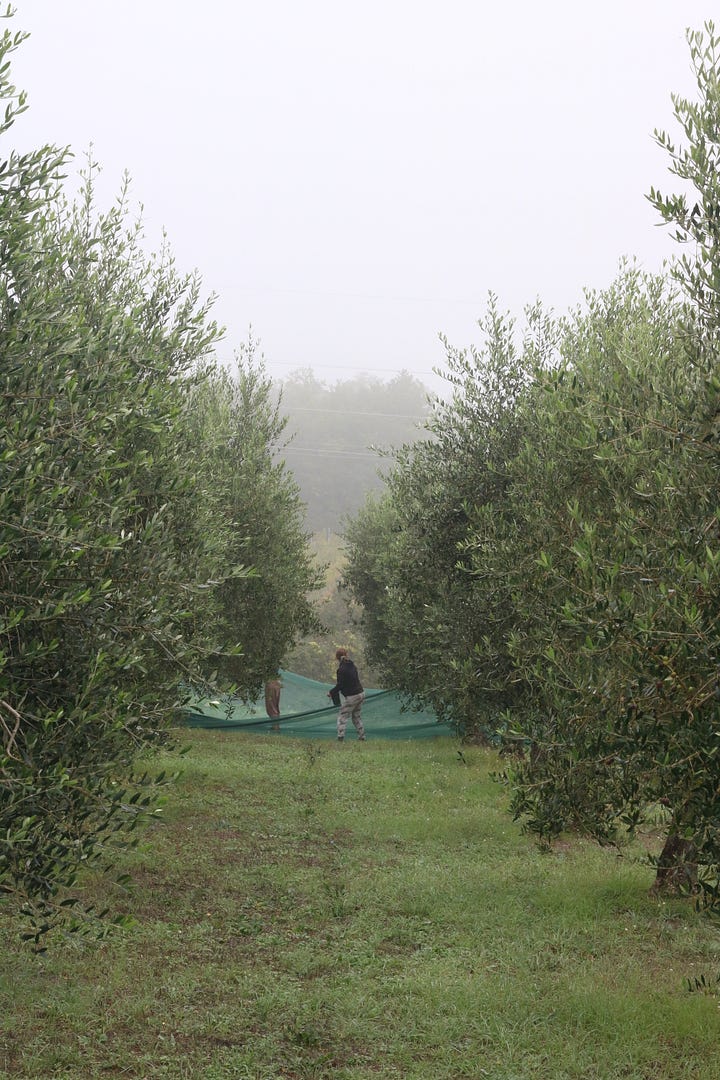
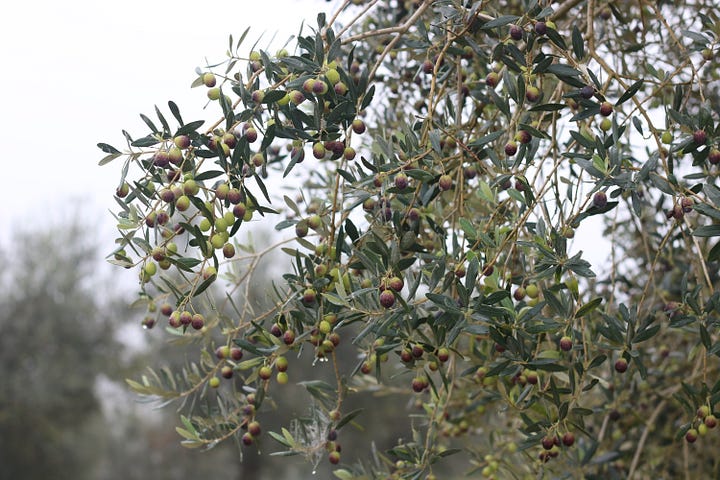
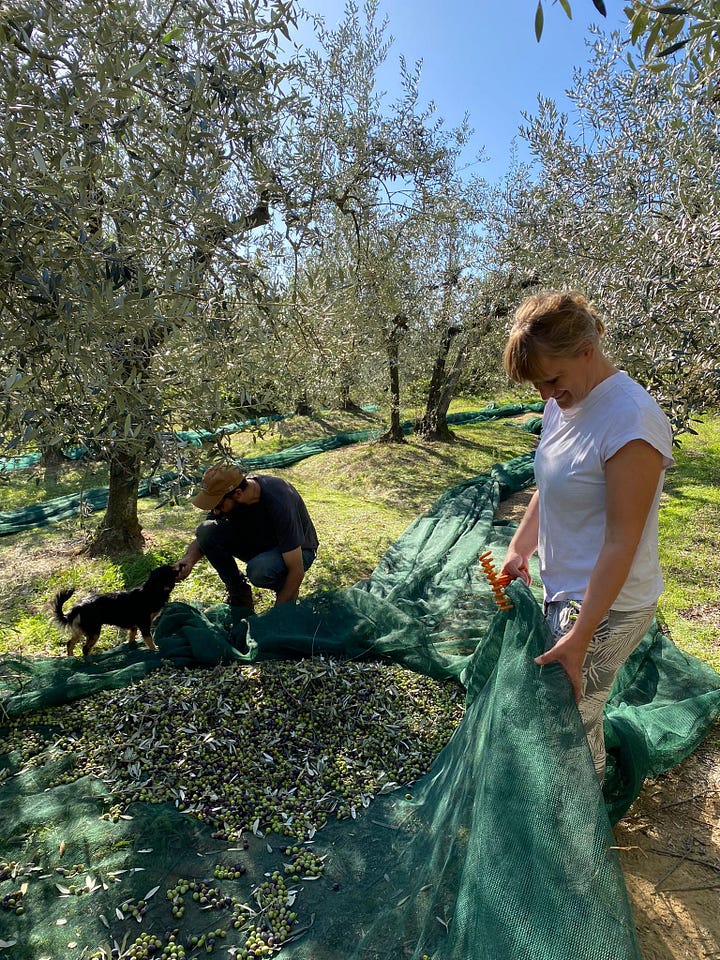
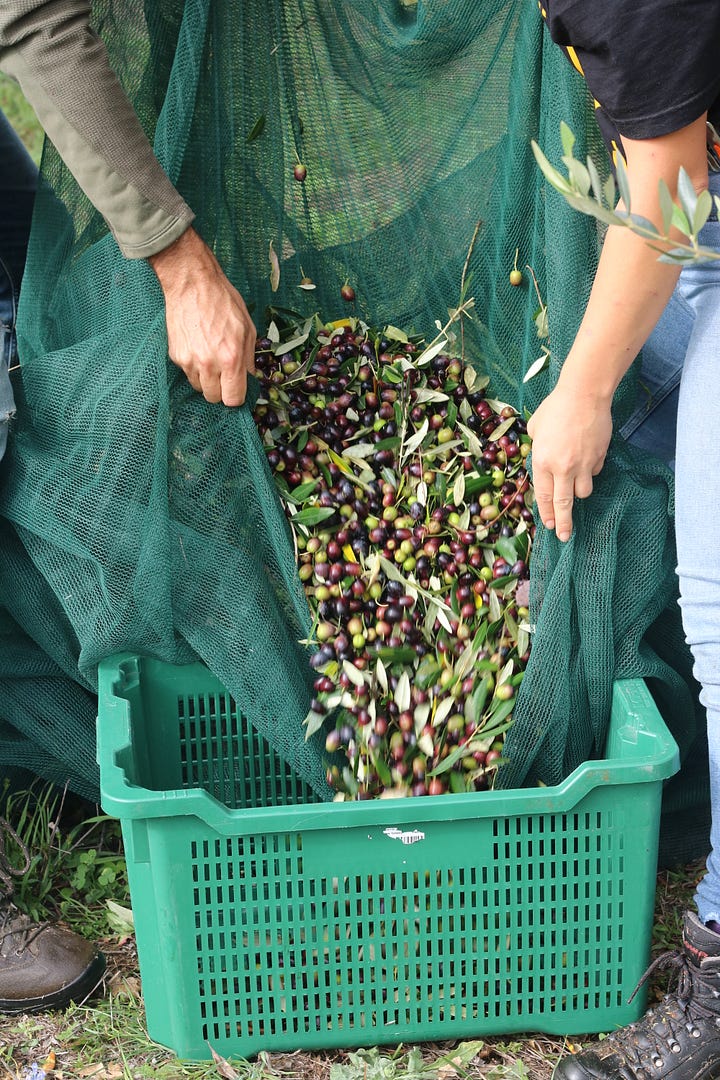
like any harvest, there wasn’t actually any time to write poety—we were pushin. our team of 8 volunteers had three weeks to pick 800 olive trees by hand (40 trees a day is 400kg of olives—800 lbs). well, technically we used mini rakes that look like children’s beach toys and these funny electric rakes-on-poles that violently vibrated when wired to a car battery. the electric shakers flicked olives from branches without damaging new limbs and sent olives into swimming-pool-sized nets below. while 2 people shook, another 2 would haul the nets—with urgency—to cover the next section of the grove, and whoever had free hands would collect olives into 30kg plastic baskets.

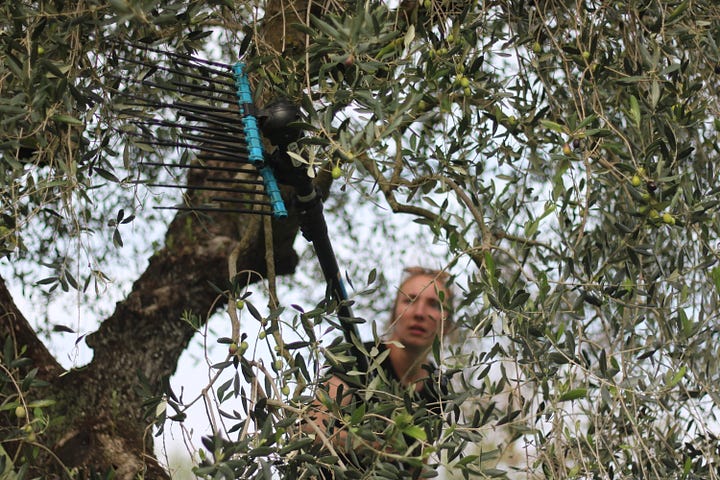

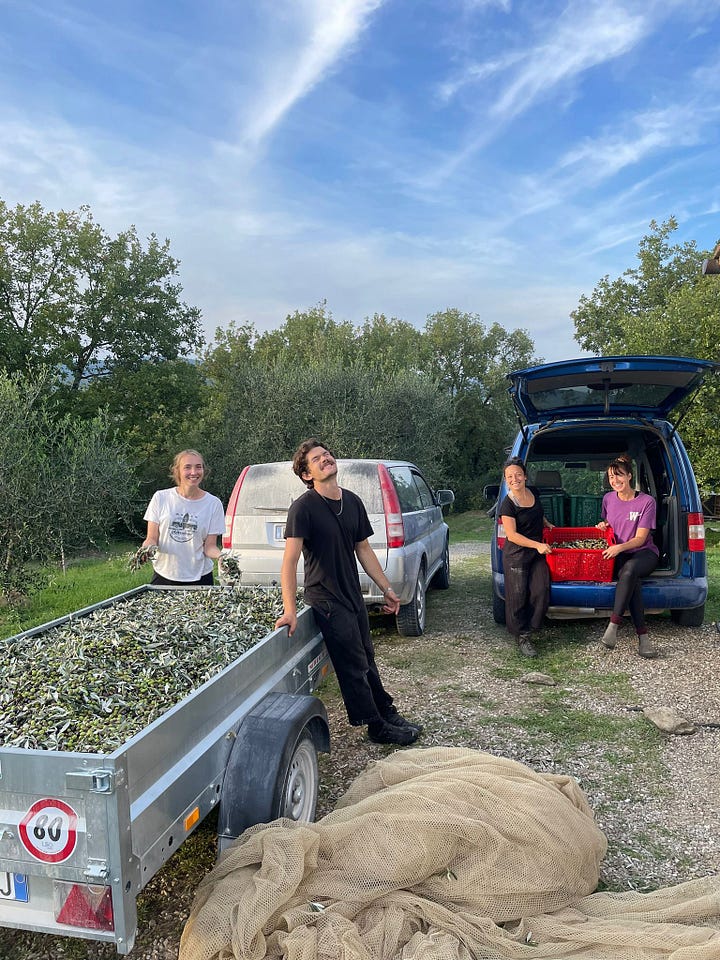
the harvest was laborious—good food is trouble—and i fear for the empty-nesting nonnos and nonnas without young, good looking volunteers to shake their olive groves. francesco too feared this loss of tuscan culture when he returned to monte san savino. larger scale farms constantly purchase and consolidate italy’s abandoned groves, often mistreating them with destructive harvesting and synthetic yield-boosting fertilizers. francesco is one of many millennials returning to the land to protect old-groves and the aging culture that stewards them.
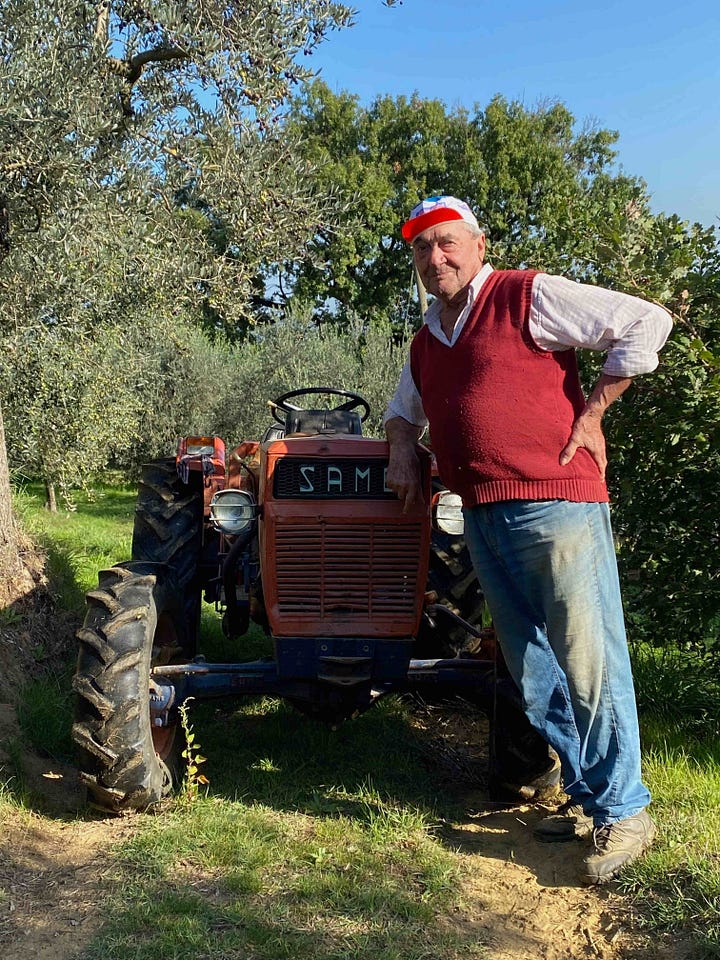
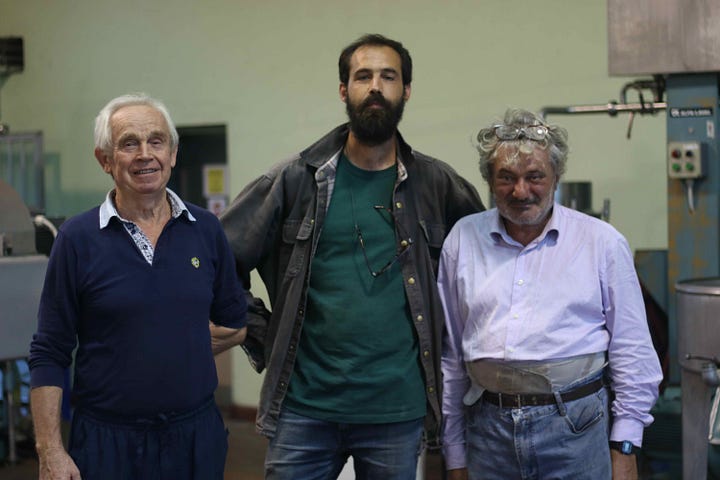
the oil mill was a testament to olive oil as a way of life—all the workers were pretty old and moved with the momentous gravity of true journeymen. they gossiped in italian about august’s unusual dry spell and shared the pain of lower yields—small talk carries more weight in a library and these mills are like libraries with no books. at the mill, local wisdom, drama, and advice passes between farmers and oilmen while they wait to unload their hard day’s work into the press.
originally, olives were processed in horse-powered stone mills similar to grain mills, but olives were exposed to air which oxidized their fragile flavor compounds. these days, olives presses are controlled environment that minimize exposure to the elements and output higher quality oils. end-to-end, it took 30 minutes for 1000 kg of olives to press out 100 liters of oil (10-15% yield is typical of early harvests but late harvests can reach up to 20%).
to keep it simple, you can see a video of the milling process’s steps in the link above. the process is short and simple, (1) de-leafing olives (2) washing (3) crushing into pulp (called olive pomace) (4) pressing liquids (5) extracting oil from liquids in centrifuge (6) bottling olio nuevo (new oil) (7) optional re-press of pomace (with chemical solvents).
throughout the whole process, quality millers closely monitor temperatures and refrain from any chemical use during cleaning, pressing, and extracting (2, 5, 6). an extra-virgin label means oil was cold extracted, without chemical solvents, and the resulting product has low acidity ( < 0.8% while just virgin is < 2.0%). when buying oil, only buy extra virgin oils—they are more like fresh-squeezed fruit juices full of nutrients. sometimes you’ll see “first cold pressed” but this is redundant to extra-virginity. some brands also sell “olive pomace oil” or “light olive oil” which have been refined with heat or blended with other oils—skip these too. be wary of anything in a clear bottle as olive oil will degrade in color and flavor over a year and even faster without uv protection so only buy bottles with opaque or uv-safe packaging and guzzle that shit within a year!!!
i left my time in tuscany with a gallon of olio nuovo and a deep respect for the craftsmenship in any specialty products like olive oil… great italian chefs know to honor the slower cooking of the artisans before them too. they lean on an arsenal of olive oils without getting in the way—they collect oils for bread, oils for cooking, oils for meats, oils desserts. there’s no such thing as “the world’s best olive oil” but there are plenty of bad ones.
i went to the olive mill so you didn’t have to, but we must all still brave the oil aisle. alone. taste is so personal, a lifelong exploration—an adventure into ones own self. try to take risks in the grocery store, take risks in the kitchen, but if you need a little help, a listicle helps too.
how to pick a good olive oil
harvest date / best-by date: buy within 1 calendar year of harvest, or more than 1 full year before best-by date (typically marked 18 - 24 months from harvest)
extra-virgin = the highest, and only real designator of quality. unrefined, and untreated with heat / chemicals. low acidity. only buy extra-virgin, anything less could be anything else. even virgin oils have considerable defect allowance.
first cold pressed = not heat treated during oil extraction. this is redundant labeling if an oil is already extra virgin.
region of origin = can be falsely labelled on the bottle, look for smaller producers with transparency to avoid fraud!
blended vs. single cultivar = most oils are olive blends with specific flavor profiles similar to wine blends, but some producers offer oils made from single cultivar (fun to try if you’re a nerd like me)
filtered vs. unfiltered = cleaner + longer lasting (>1 year) vs. more texture + shorter lifespan (<1 year).
recommendations:
high quality (seasoning, finishing): agricola maraviglia ($35 / 500 ml), pianogrillo ($38 / 500 ml)
medium quality (salads, low-heat cooking): partanana ($13 / 500ml), frankies 451 ($25 / 1 liter), frantoia barbera ($15 / 500ml)
low quality (cooking only): graza sizzle ($15 / 750ml), california olive ranch ($22 / 1 liter), trader joes greek oil (like $9 / liter? tasted it, and it’s actually kinda alright?)
what would be your last meal if you died tomorrow? why choose one when you could have them all…
last meal: [zuppa di farro] - easily the best thing i ate in italy. the simplicity of under farro braised until chewy—but not mushy—in broth of beans, tomato, and mire poix. perfectly salted, i could taste the delicate flavor of farro through the clean soup.
last album [moin - paste] - weirdly enough i got really into this british post-hardcore release. the sparse rock landscapes, grungy bass chug, and electronic flair ups kinda feel like that band Slint. it’s more of a dreery mood than an album.
last restaurant [bernie’s - williamsburg brooklyn] - sometimes all a girl just needs a burger, a cob salad, and a half-decent martini. this spot is barely left of average on all accounts and always full of brooklyn scenesters and fashionistas. enjoy a night of gossip in a corner booth xoxo.
last movie [aftersun - charlotte wells] - aftersun takes place at a semi-divey croatian resort where a father and daughter take holiday. told equally through the manufactured bliss of vacation and nostalgic vhs vinettes, it explores how we remember our relationships through the rose-tint of time. it felt sorta like the show white lotus but it only murder your heart.
last art piece [the rape of a sabine woman - giambologna, florence] - a massive 4 meter sculpture of a pure sabine woman being abducted—as if from heaven. this piece was cast in wax and set on fire in paris in a room full of chair-shaped candles in 2020, but the real deal still takes the cake.
last song [kiss of life - sade] - i’m like 20 years late to the sade train, but it’s never too late for love. video’s hot like lava.
thanks for joining me for dinner, don’t be shy, invite more friends to the party~~






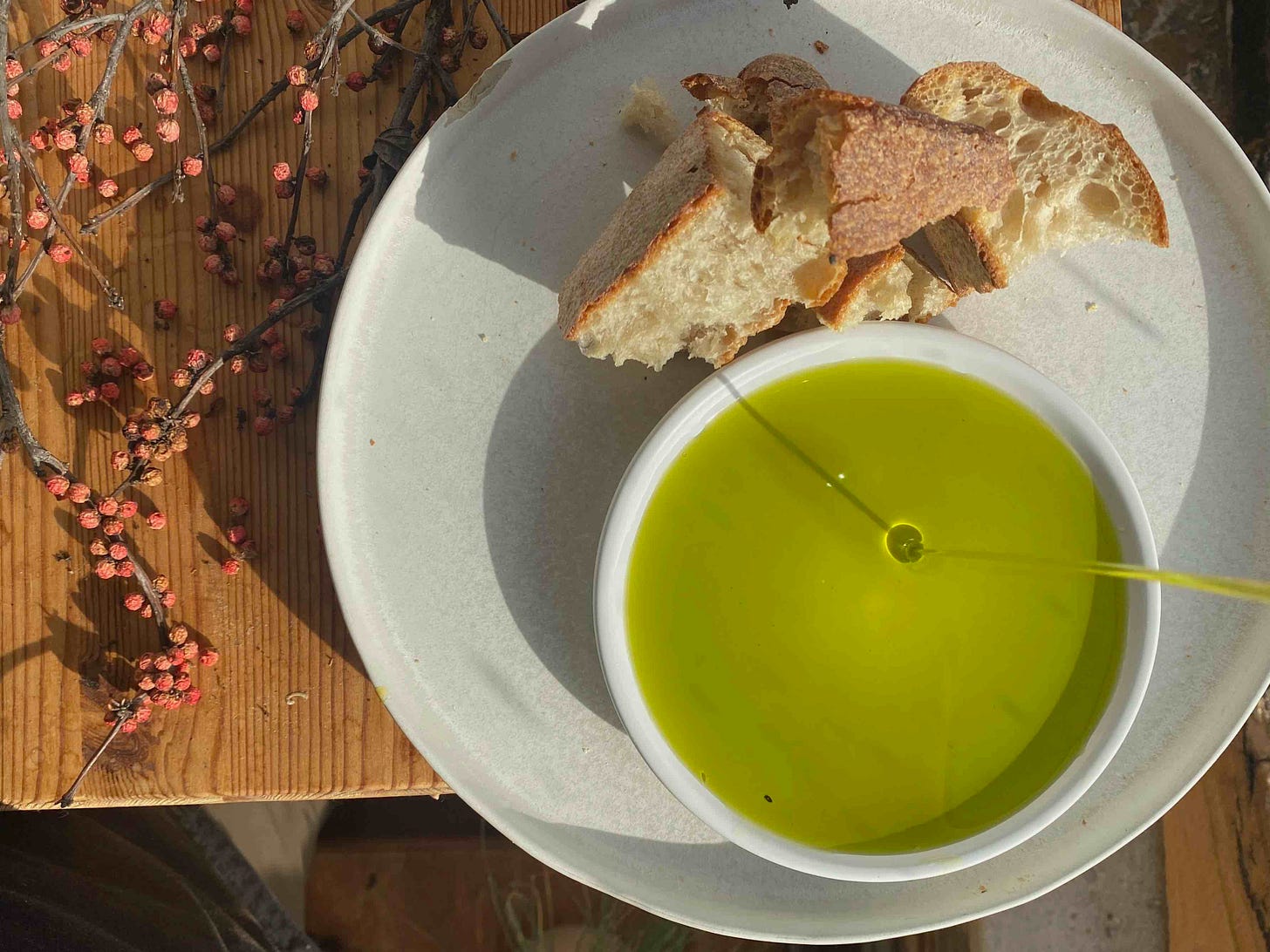
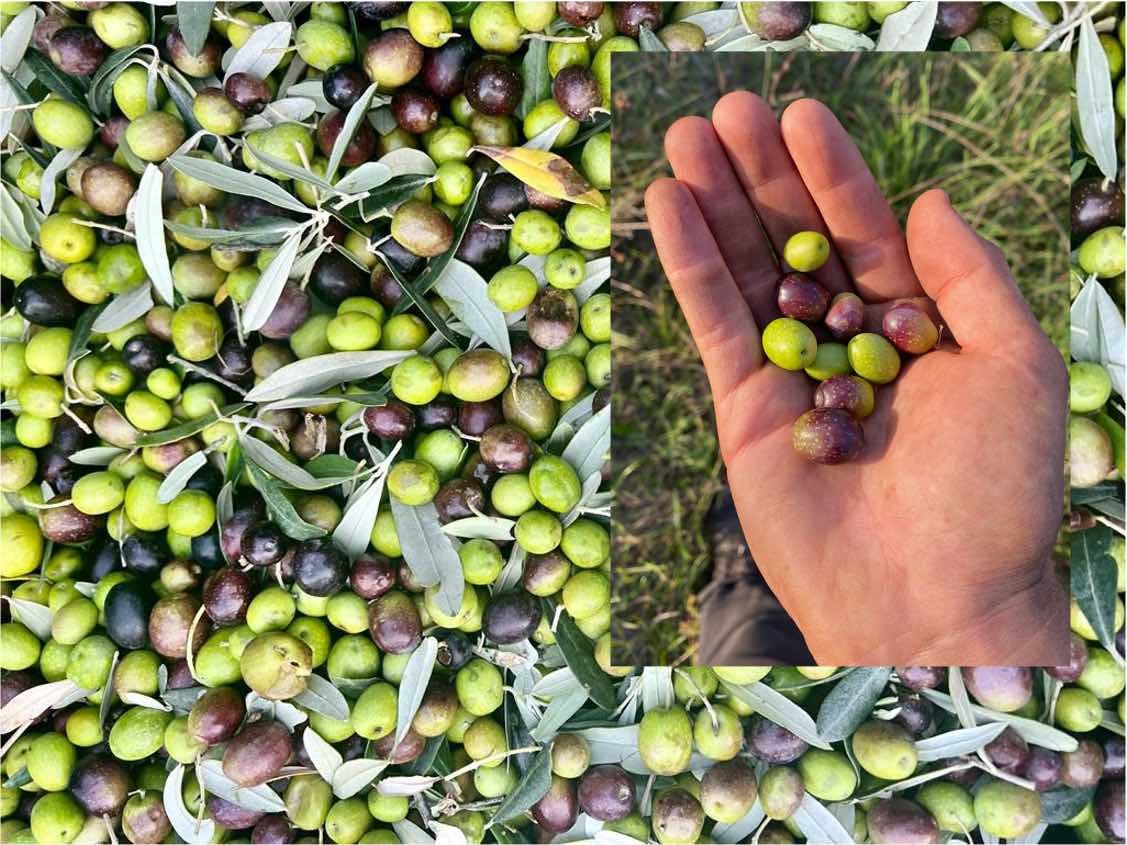


The whole read made me smile :) I hope you're well!